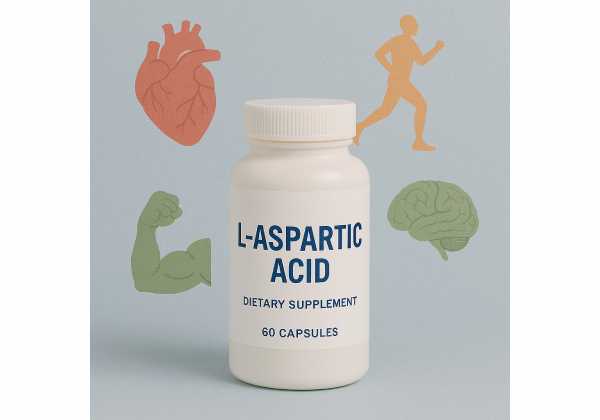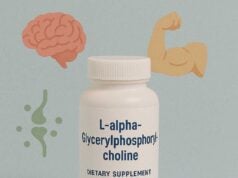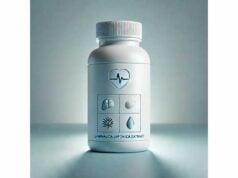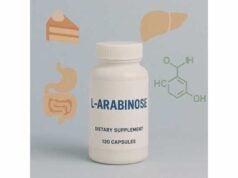
L-aspartic acid is a nonessential amino acid that your body makes every day and also absorbs from protein-rich foods. In cells, it plays quiet but vital roles: moving nitrogen between pathways, helping dispose of ammonia through the urea cycle, shuttling energy-carrying electrons into mitochondria, and serving as a building block for proteins and nucleotides. Because it is abundant in foods and synthesized internally, most healthy adults do not require a dedicated supplement. Still, you may see L-aspartic acid promoted for exercise performance, recovery, or mental energy. The reality is more nuanced. Mechanistic data—how the amino acid behaves inside cells—are strong, but direct human evidence for general-purpose supplementation is limited and mixed. When used, dosing and timing matter, as does the difference between the L- and D- forms commonly discussed online. This guide offers a practical, people-first read on what L-aspartic acid actually does, how (and if) to use it, who might benefit, who should avoid it, and how to weigh marketing claims against current research.
Quick Facts
- Supports energy metabolism (malate–aspartate shuttle), nitrogen handling, and urea cycle function.
- Evidence for performance or cognitive benefits in healthy adults is limited; diet usually provides enough.
- Typical supplement range in products: 1,000–3,000 mg/day; no established RDA or UL for L-aspartic acid.
- Avoid if you have advanced kidney or liver disease, a urea cycle disorder, or active cancer under treatment unless a clinician approves.
Table of Contents
- What is L-aspartic acid and how it works
- Does L-aspartic acid offer real benefits?
- How to use it: dosage, timing, and forms
- Who benefits most and who should skip it
- Side effects, interactions, and precautions
- What the research says right now
What is L-aspartic acid and how it works
L-aspartic acid (often shortened to “aspartate”) is one of the 20 standard amino acids used to build proteins. Biochemically, it’s a dicarboxylic amino acid, meaning it carries two carboxyl groups that make it acidic at physiological pH. That chemistry allows aspartate to plug into many reactions where carbon skeletons and nitrogen atoms are swapped, recycled, or shuttled to where they’re needed most.
Here are the core jobs L-aspartic acid performs:
- Energy and redox balance (malate–aspartate shuttle). Glycolysis in the cytosol generates NADH that can’t cross the mitochondrial membrane directly. The malate–aspartate shuttle solves this: aspartate and malate rotate carbon and electrons so NADH’s “reducing power” reaches the respiratory chain. This supports ATP production, especially in energy-hungry tissues such as brain and muscle.
- Nitrogen logistics and detoxification. Aspartate donates one of the two nitrogen atoms used to make urea in the liver. By feeding the urea cycle, it helps convert ammonia—a toxic byproduct of protein metabolism—into a form the kidneys can excrete. In muscle, aspartate also helps generate glutamate and alanine, which move nitrogen safely between tissues.
- Building blocks for growth and repair. Cells use aspartate to synthesize proteins, nucleotides (purines and pyrimidines), and asparagine. During growth, repair, or immune activation—times when nucleotides and proteins are in high demand—aspartate availability can influence how quickly cells can build.
- Neurobiology. In the brain, aspartate participates in excitatory signaling and shares transport systems with glutamate. It’s released from neurons in specific circuits and interacts with receptors that regulate synaptic plasticity and energy use.
Dietary sources and normal status. Mixed diets provide ample amounts of aspartate through poultry, fish, eggs, dairy, legumes, nuts, seeds, and whole grains. The small intestine consumes a significant portion of incoming aspartate for its own needs before it even reaches the bloodstream. Meanwhile, your cells synthesize aspartate from oxaloacetate (via transamination), so body levels remain steady without supplementation in most circumstances.
L- vs D- forms. Supplements and biochemistry discussions sometimes mix L-aspartic acid and D-aspartic acid. They are mirror-image forms with different biological profiles. The L-form is the one your body uses to build proteins and run the urea cycle and malate–aspartate shuttle. The D-form has niche roles in the brain and endocrine system and is often marketed (sometimes dubiously) for testosterone—claims that do not apply to L-aspartic acid. When reading labels, be sure you know which form you’re buying.
Bottom line: L-aspartic acid is a versatile metabolic workhorse. Its value comes from quiet, constant contributions—keeping energy flowing and nitrogen moving—rather than flashy, instantly felt effects.
Does L-aspartic acid offer real benefits?
It depends on the context. Mechanistic evidence—the “how it works” inside cells—is robust, but translation to everyday outcomes varies.
Where support is strongest (biological plausibility and select findings):
- Exercise metabolism, especially repeated efforts. Because aspartate feeds the tricarboxylic acid (TCA) cycle and helps clear hydrogen ions via improved oxidative metabolism, some studies report modest benefits in endurance tasks or repeated sprints. Protocols often use sodium or mineral salts of L-aspartate and relatively high acute doses before exercise. Effects, when present, are usually small (e.g., slight improvements in cadence or time to exhaustion), not game-changing increases in average power. Individuals respond differently, and benefits may be more noticeable under fatigue or when sessions stack up.
- Ammonia handling. By donating nitrogen in the urea cycle and supporting glutamate and glutamine production, L-aspartate can help clear ammonia—a contributor to fatigue in long or intense efforts. Clinically, combinations such as L-ornithine L-aspartate are used under medical supervision to support ammonia detoxification; that’s not a DIY supplement strategy, but it explains the biochemical rationale.
Where claims are plausible but not well-proven in healthy users:
- General cognitive enhancement or “mental energy.” Aspartate interacts with excitatory signaling, but turning that into reliable, safe nootropic effects in healthy adults hasn’t been shown in rigorous trials. Overstimulating excitatory pathways is unnecessary and may be counterproductive.
- Body composition or strength gains. For building muscle and strength, total daily protein, resistance training, sleep, and calorie balance dwarf the impact of single amino acids taken alone. There’s no strong evidence that L-aspartic acid supplementation—on top of adequate protein—adds unique hypertrophy or strength benefits.
Where caution overrides theoretical upside:
- Oncology and rapid cell turnover. Because aspartate fuels nucleotide synthesis and cell proliferation pathways, supplementing it without medical oversight is not advised during active cancer treatment or shortly after. This doesn’t mean aspartate from foods is harmful—balanced diets are encouraged in oncology care—but it does mean avoid solo high-dose L-aspartic acid supplements unless a clinician says otherwise.
A balanced takeaway: L-aspartic acid supports the biochemistry that underlies endurance, recovery, and nitrogen clearance. In practice, most healthy people get these benefits by eating adequate protein and training well. If there is a place for L-aspartic acid supplements, it’s narrow: targeted, short-term trials around heavy training blocks, and only after the big rocks (sleep, total protein, carbohydrates around training, hydration) are firmly in place.
How to use it: dosage, timing, and forms
There is no established Recommended Dietary Allowance (RDA) or Tolerable Upper Intake Level (UL) for L-aspartic acid. Your body makes it, food provides it, and needs vary with training load and health status. If you still choose to supplement, keep the approach conservative and purposeful.
Common supplemental forms
- Free-form L-aspartic acid (powders or capsules).
- Mineral salts (e.g., sodium L-aspartate, magnesium/potassium aspartate), sometimes used acutely before training.
- Protein powders (whey, casein, soy, mixed plant blends) that naturally contain aspartate within whole protein; these are often a better first step than single-amino-acid products.
Practical dosing ranges
- Food-first baseline: Most adults meet needs through diet. If your daily protein is 1.0–1.6 g/kg (higher for athletes, 1.2–2.0 g/kg during heavy training), you almost certainly get sufficient L-aspartic acid.
- Cautious supplement trial (healthy adults): 1,000–2,000 mg/day of L-aspartic acid, taken with meals, for 2–4 weeks, then reassess.
- Event- or workout-focused use: Some protocols use 3,000–8,000 mg acutely (often as a mineral salt) in the hours before repeated high-intensity efforts. Effects are variable; start at the low end to gauge tolerance.
Timing considerations
- Split doses if you exceed 1,000 mg at once; smaller amounts are usually better tolerated.
- With food can reduce gastrointestinal discomfort.
- Avoid late-evening dosing if you feel wired or sleep is sensitive.
Stacking and combinations
- For endurance blocks, pair carbohydrates (to spare muscle glycogen) with balanced protein across the day. Creatine, beta-alanine, and caffeine have stronger human evidence than L-aspartic acid for performance.
- If you already take ammonia-lowering or urea cycle–related products (e.g., L-ornithine L-aspartate under medical care), do not add L-aspartic acid without your clinician’s approval.
Quality and labeling
- Confirm the L-form on labels; do not confuse with D-aspartic acid, which is marketed for different reasons and has different evidence.
- Choose brands that publish third-party testing for purity and contaminants.
- Check excipients if you’re sensitive to sweeteners or flavors.
When to stop
- If you notice persistent GI upset, headache, restlessness, or sleep changes, discontinue.
- If no clear, measurable benefit appears after 2–4 weeks, move on—your time and budget are better spent on fundamentals.
Who benefits most and who should skip it
May consider a cautious, short trial (healthy adults)
- Athletes during dense training weeks with multiple high-intensity sessions or competitions. A short trial of 1,000–2,000 mg/day (or a small pre-event dose) may be reasonable to see if you experience less post-session heaviness or faster bounce-back. Track objective markers (session RPE, split times, power output) to judge value.
- Individuals struggling to meet protein needs (e.g., post-dental work, early appetite loss during illness). Even here, a balanced protein powder is usually smarter than single-amino-acid add-ons. Consider L-aspartic acid only if you’ve addressed total protein, calories, and meal distribution.
Probably do not need a supplement
- Most healthy adults with adequate protein intake. A varied diet supplies L-aspartic acid in context with other amino acids your body needs for performance and recovery.
- Recreational lifters and endurance athletes who already hit protein targets and structure training well. The marginal gain—if any—is unlikely to justify routine use.
Avoid unless medically supervised
- Active cancer treatment or recent oncology care. Because aspartate supports nucleotide synthesis and cell proliferation, avoid self-supplementation.
- Advanced kidney disease, significant liver disease, or urea cycle disorders. Additional amino nitrogen can worsen metabolic control or precipitate complications.
- Children, pregnancy, and lactation. There is no evidence-based need for single-aspartate supplements; stick to food and clinician-guided nutrition.
- Known sensitivity to excitatory amino acids (e.g., history of excitotoxicity-related neurological issues). Although rare, caution is appropriate.
If you’re unsure
Begin with a simple intake check: calculate protein from a typical day, spread it across 3–4 meals, and monitor training response. Most people see larger improvements by fine-tuning sleep, carbohydrate timing, and progressive overload than by adding L-aspartic acid capsules.
Side effects, interactions, and precautions
Common, generally mild effects (often dose-related)
- Gastrointestinal: nausea, bloating, loose stools, or abdominal discomfort—more likely with large single doses or empty-stomach use.
- Neurological: headache, restlessness, or a “wired” feeling in sensitive users; avoid late dosing if sleep is affected.
Context-specific concerns
- Excitatory signaling: Aspartate participates in excitatory neurotransmission. Overdoing excitatory inputs—whether pharmacologic or nutritional—can backfire in susceptible individuals. This doesn’t mean dietary aspartate is harmful, but it argues for moderation with supplements and attention to personal response.
- Kidney and liver workload: All amino acids add nitrogen that organs must process. If you have chronic kidney disease, significant liver disease, or urea cycle disorders, avoid single-amino-acid supplements unless your specialist directs them.
- Oncology: Because rapidly dividing cells need aspartate to build nucleotides, avoid supplemental L-aspartic acid during active cancer therapy and in the early survivorship window unless your oncology team approves.
- Drug and lab interferences: Free amino acids can, in rare cases, alter absorption of certain medications when taken together or interfere with specific lab assays. To be safe, separate L-aspartic acid from sensitive medications by 2 hours and tell your clinician about all supplements.
Allergies and product quality
- Reactions are more likely due to flavors, sweeteners, or colorants than to the amino acid itself. Choose simpler formulas and verify third-party testing where possible.
Red flags—stop and seek care
- Worsening fatigue, edema, confusion, or persistent GI symptoms.
- Any supplement use that coincides with oncology treatment without approval.
- New neurological symptoms after starting high doses.
Simple safety rules
- Keep doses modest and time-limited.
- Prioritize food-first strategies and total protein.
- If you have kidney/liver disease, urea cycle disorders, or are in oncology care, skip L-aspartic acid unless a clinician prescribes it.
What the research says right now
1) Biology is compelling. Research synthesizing biochemistry and physiology highlights L-aspartic acid’s central roles: it feeds the malate–aspartate shuttle to maintain mitochondrial redox balance; donates nitrogen to the urea cycle; supports gluconeogenesis, nucleotide synthesis, and neurotransmission; and helps muscles handle nitrogen loads during and after exercise. These pathways explain why aspartate levels drop with exhaustive work and why tissues with high energy demands rely on efficient aspartate transport.
2) Performance findings are mixed and modest. Human studies using sodium or mineral aspartate have reported small improvements in select performance metrics (e.g., peak cadence during repeated sprints or slightly longer time to exhaustion under steady workloads). However, effects are inconsistent across protocols, often tied to acute, relatively high doses, and may not translate into better average power or competitive outcomes. In practice, any benefit appears subtle and context-dependent.
3) The intestine uses a lot of what you take. A significant fraction of ingested aspartate is consumed by intestinal cells, which limits how much reaches the bloodstream intact. That may partly explain why large oral doses do not produce dramatic systemic effects in healthy people.
4) Neurobiology invites caution, not fear. Aspartate contributes to excitatory signaling and interacts with transporters shared with glutamate. That’s normal physiology, but it’s also a reason to avoid megadoses or late-night dosing if you’re sensitive to stimulatory inputs. For cognitive enhancement, stronger evidence exists for sleep optimization, exercise, and targeted nutrients like omega-3s than for L-aspartic acid pills.
5) Health conditions change the equation. In liver disease and urea cycle disorders, clinicians manage nitrogen metabolism carefully; adding free amino acids without supervision can destabilize things. In oncology, because proliferating cells need aspartate for nucleotide synthesis, supplementation during treatment is best avoided unless specifically prescribed.
Practical synthesis for consumers
- If you’re considering L-aspartic acid to boost workouts, treat it as a short trial layered on top of sound training and nutrition—not as a staple. Start low, set a time limit, track objective markers, and stop if nothing measurable improves.
- If your goal is general health or cognition, a balanced diet with adequate protein, regular exercise, and good sleep are higher-yield strategies than single-amino-acid supplements.
- If you have medical conditions affecting nitrogen handling or are in cancer care, prioritize clinician-guided plans; L-aspartic acid is not a self-care tool in these settings.
References
- Aspartic Acid in Health and Disease 2023 (Systematic Review)
- Sodium L-Aspartate Supplementation Improves Repeated-Sprint Performance 2023 (RCT)
- Physiology, NMDA Receptor 2022 (Review)
- Aspartate in the Brain: A Review 2025 (Review)
Disclaimer
This article is educational and does not replace personalized medical advice, diagnosis, or treatment. Do not start, stop, or combine supplements without talking to a qualified healthcare professional—especially if you have kidney or liver disease, a urea cycle disorder, cancer under active management, or if you are pregnant or breastfeeding. If you experience adverse effects after taking an amino acid supplement, stop and seek medical guidance.
If you found this guide helpful, please consider sharing it on Facebook, X (formerly Twitter), or any platform you prefer, and follow us for more evidence-based health content. Your support helps us continue creating high-quality resources.










